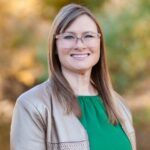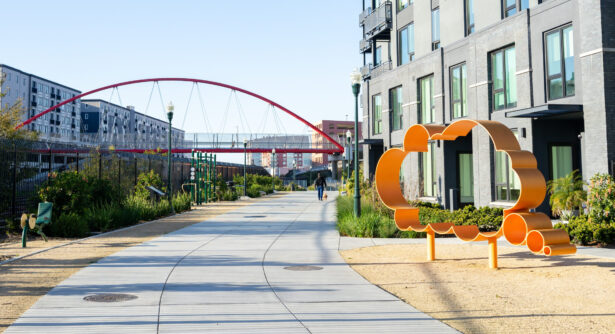
Praisin Arizona: 2024 Brownfield Workshops
April is a beautiful time in Arizona that, to me, is characterized by the yellow of the palo verde and brittlebush wildflowers. Now the month will also be characterized by brown, as in brownfields. Between April 23 and 25, CCLR logged more than 500 miles in the copper state promoting successes and opportunities made possible by brownfields funding.

Historic Main Street Superior Before and After Revitalization Efforts
My week started when I flew into Phoenix on Sunday. I lived in the Phoenix metro for more than a decade and traveled the state extensively during that time, but this trip took me to many places I had yet to explore, starting with Superior. Superior is an hour east of Phoenix in the shadow of the Superstition Mountains. Like many towns in this area, Superior was established as a mining town in 1902 on one of the largest copper deposits in the world. The mine closed when the price of copper fell in the 1980s. Without the mining jobs, 2/3rds of Superior’s residents moved away. Those who stayed had to contend with abandoned buildings, reduced opportunities, and a vacancy rate similar to New Orleans post Hurricane Katrina. That began to change in the 2010s when new leadership focused on restoring the town to its former glory, a process that started with brownfields funding.
With support from the Arizona Department of Environmental Quality (ADEQ) the town began to assess and abate the more than 90 abandoned and blighted buildings around town. Along the way, Superior grew confidence to pursue its own EPA grant. Many communities are not successful in securing funding their first try and Superior was no different. But instead of losing momentum, they opted to join other mining communities to form the Copper Corridor Blight Busters (CCBB) and pursue a coalition grant. CCBB secured a coalition grant, and now multiple communities across Gila and Pima counties are benefiting from assessments and cleanups.
Superior has now either abated or demolished more than 70 buildings around town. Their biggest brownfield project is their new multi-generational center housed in the original Superior High School, a two-story brick building built in 1926. The multi-generational center will host town hall, a senior center, library, recreation center, job training, and a business incubator. Brownfields funding abated asbestos and lead within the building, and with the help of private/public partnerships and grants, the town hopes to finish its renovations by the building’s 100 year anniversary in 2026. The town of Superior’s transformation is so inspiring that I worked with a local digital marketing company to film Superior’s brownfield story. We look forward to sharing this video with you when it is complete.
From Superior, I drove through Globe and Miami, also a part of the CCBB and with similar concerns. After turning south through the San Carlos Apache Tribe Reservation I made it to Willcox for our first of three brownfields workshops. Workshop attendees convened in an old Chevrolet Dealership that had benefited from a brownfields assessment when a local winery was interested in the building for a tasting room. Today, with a clean bill of health, the Golden Rule Vineyard operates out of this historic structure in the heart of Willcox.

A Camaro in the Golden Rule Tasting Room reminds you of the building’s dealership roots.
We heard from representatives from Willcox, Cochise County, the City of Tucson and more about how brownfields funding has benefitted communities in Southern Arizona. While outside of the Copper Corridor, Southern Arizona towns such as Bisbee, Willcox, and Benson have seen similar challenges as Superior – many old and abandoned structures that were hampering community opportunities. With the help of the Cochise County Revolving Loan Fund (RLF), ADEQ’s brownfields program, and additional EPA funding, structures including the original hospital in Bisbee are being cleaned up and reused for beneficial reuse.
After the sessions, we enjoyed a walking tour of historic Willcox to explore buildings that had benefited from assessment and cleanup, as well as buildings that still need work. Showing that Willcox is continuing to think ahead and strategize about how to bring even more new homes and businesses to their town’s historic center.

The Willcox Commercial Building was originally built in 1880 and still has its original tin roof, as well as lead paint which was discovered during a brownfields assessment and now can be remediated.
“We recognize that businesses need to make money to stay in business, and maintaining these old buildings is expensive,” City Manager Caleb Blaschke said, “Cities should provide support to shore up these old buildings, to preserve them and help our local small businesses.”
After the walking tour we packed up and drove north to Phoenix for our next event. Early the next morning we met at the Heard Museum, which was established in the 1920’s and benefitted from brownfields assessments as well. The Heard Museum houses an incredible collection of indigenous art and artifacts. One exhibit shares the origin stories of various tribes. The immersive experience surrounds you with the images and sounds of nature and underscores our connection to the natural world, but also our obligation to protect it. An obligation we have not always taken seriously.

Spaces of Opportunity Executive Director Ryan Thayer welcomed us to the urban farm. An assessment grant was used on this site and the farm was organized to avoid planting edible plants areas with high levels of naturally occurring arsenic in the soil.
The Phoenix workshop welcomed more than 60 attendees from municipalities, tribes, nonprofits, and the consultants who help make the brownfields work happen. We heard from a diverse group of speakers starting with a primer on brownfields and available grants and technical assistance, then case studies and lessons learned along the way. One of the case studies, Rio Reimagined, is a coalition of six cities and two tribal nations working together to restore habitat and return abandoned land back into productive uses along more than 50 miles of the Rio Salado, as well as the Gila River and Aqua Fria. In the past, these important habitats were exploited to extract sand, gravel and cement, to dump trash (both legally and illegally), and to host industry.

Rio Salado Habitat Restoration Area off of Central Ave.
After the sessions we boarded a bus for a tour of successful Phoenix brownfields projects including Rio Reimagined sites as well as Spaces for Opportunity, a 20-acre urban farm. This farm provides space for farmers, job training, a community garden and education space, monarch butterfly habitat, and space for a farmers market in a community that previously was a food desert. This example of a brownfield to heathfield was made possible by people such as Rosanne Albright from the City of Phoenix who championed the initiative. Watch the CCLR video about the Phoenix’ Healthfields project.
Last but not least we traveled to Flagstaff where we learned about the new Mountain Line Transit Hub, JoJo’s Place (a former Route 66 motel turned transitional housing), and the coalition providing support to Northern Arizona communities devastated when I-40 bypassed Route 66, cutting their towns off from travelers. Heather Damolin of Housing Solutions for Northern Arizona shared how discovering asbestos in drywall at the old Travelodge in Flagstaff ended up being a benefit to the project. Funding to remove all the drywall made upgrading plumbing and electrical easier, and uncovered problems they otherwise would not have found, such as roofs supported by windows and holes that were not visible behind the drywall. Now, the 44-unit transitional housing project is welcoming its first residents on their journey off the streets and into stable housing.
We completed our brownfields tour at Lowell Observatory. Founded in 1896, the campus is dotted with structures built over its 128 year history. At least 12 of these buildings were constructed with asbestos and lead containing materials. ADEQ and EPA both provided resources to abate the buildings so the observatory could continue its scientific and educational pursuits without risking the health of employees and visitors.
Attendees at the conference ran the gamut from those completely new to brownfields to old hats eager to share the lessons they have learned. We received glowing reviews from attendees who were inspired and motivated to take what they learned and translate it into benefits for their communities. We are looking forward to helping you along your journey and hope that some of the projects inspired by this week’s sessions will be featured as success stories at our next AZ brownfields workshops!
Main Takeaways from the Workshops:
- Assess before you buy: through ADEQ and AZ’s various coalition and RLF grants, communities have access to funding for assessments. TBAs are also a good option for communities without coalition or RLF grant opportunities.
- Call ADEQ: Arizona has a robust brownfields program made possible by EPA funding. Starting at ADEQ can assess/clean up brownfields without the challenges of managing an EPA grant.
- Not every assessment leads to bad news: we heard about a number of complex sites with troubling past uses and concerns about extensive contamination. However, assessment uncovered only superficial or limited contamination and cleanups that were easier than expected.
- Brownfields assessments/cleanups are not enforcement. Both EPA and ADEQ want sites to be cleaned up and will not punish innocent landowners for contamination left before they took ownership.
- Lead and asbestos are the main contaminants inside AZ buildings. Naturally occurring arsenic in soil, petroleum, dry cleaning chemicals, former landfills and mine waste also impact sites throughout the state.
- Community engagement is an important first step to the reuse process. Identify what your community needs then figure out how to use brownfields to fit those needs. You should continue to engage the community throughout the cleanup and reuse process as well.
- Persistence and patience are virtues. The work does not happen overnight. You also need to be creative and find various funding sources and partners to transition a site back into productive use. Brownfields are often the first step in this process, but other resources need to be leveraged to fund reuse.
- You can’t do it alone. Work collaboratively with others in coalitions or partnerships to complete projects. You need champions to shepard projects through the process, and you need political and community will to stick with it for the long run.
- Put all together, communities can experience huge payoffs like Superior, Willcox, Phoenix, Tucson, and Flagstaff have seen.

Sponsors thanking the planning committee by having CCLR and EPA staff/consultants take a victory lap





